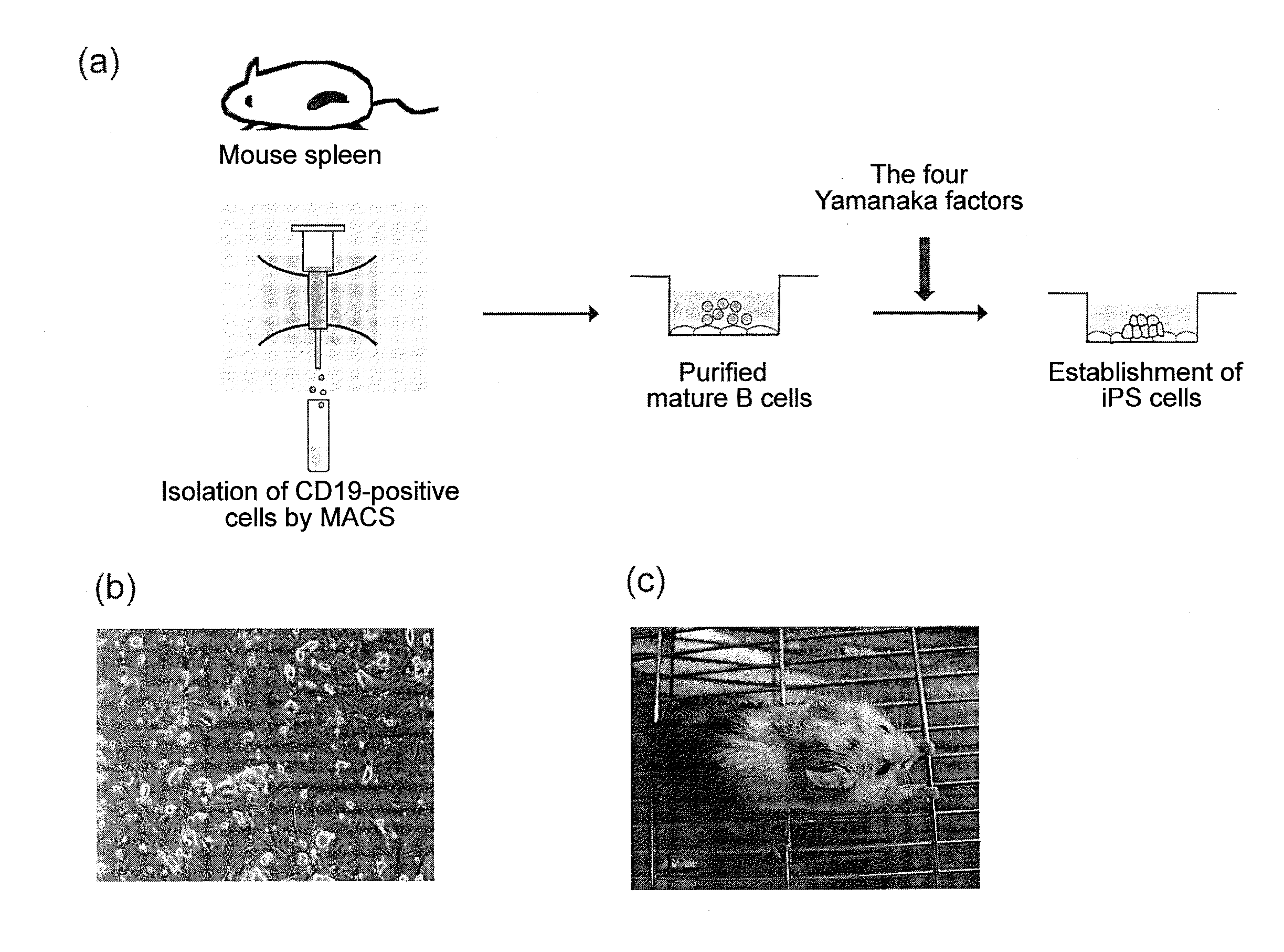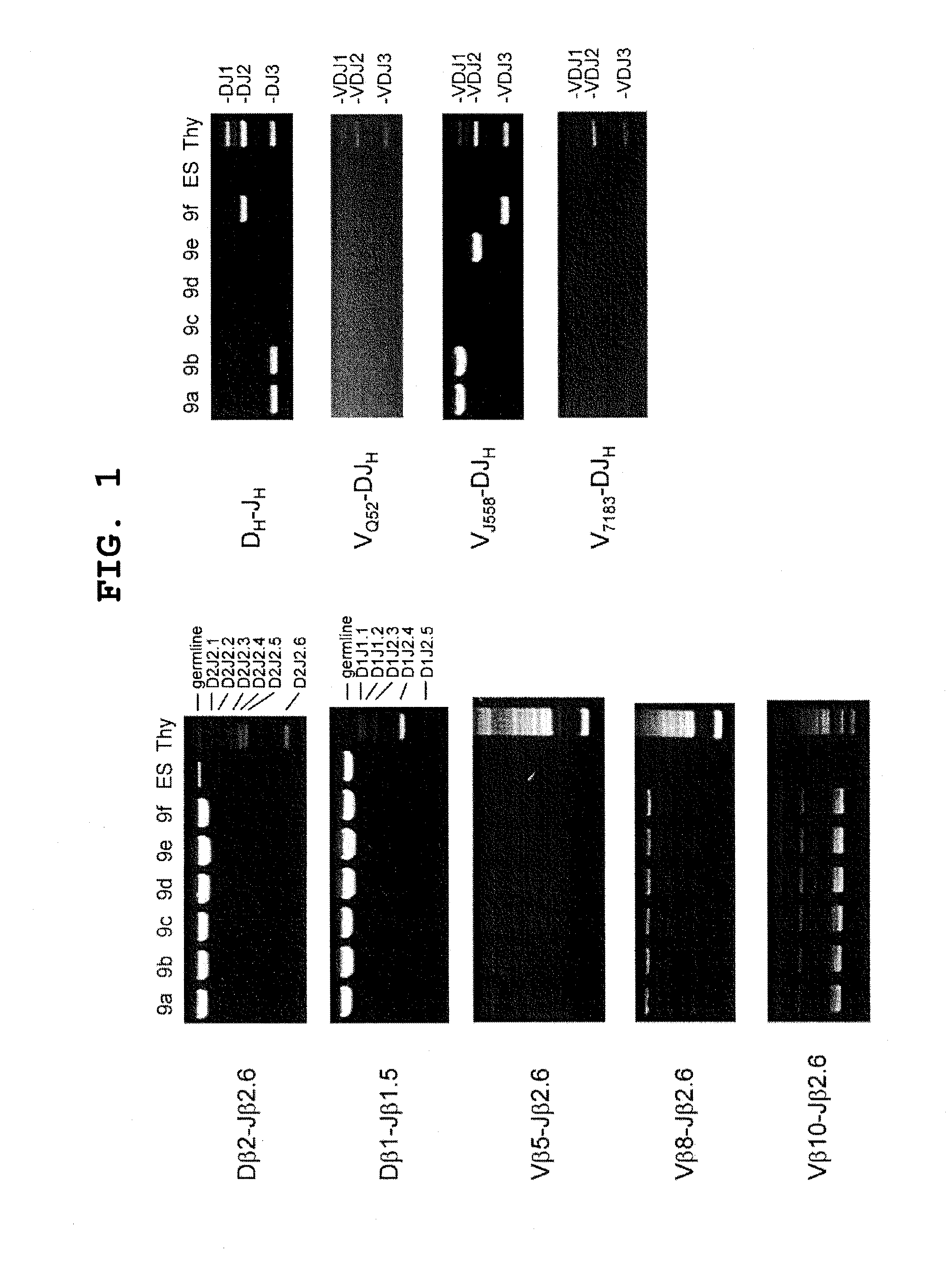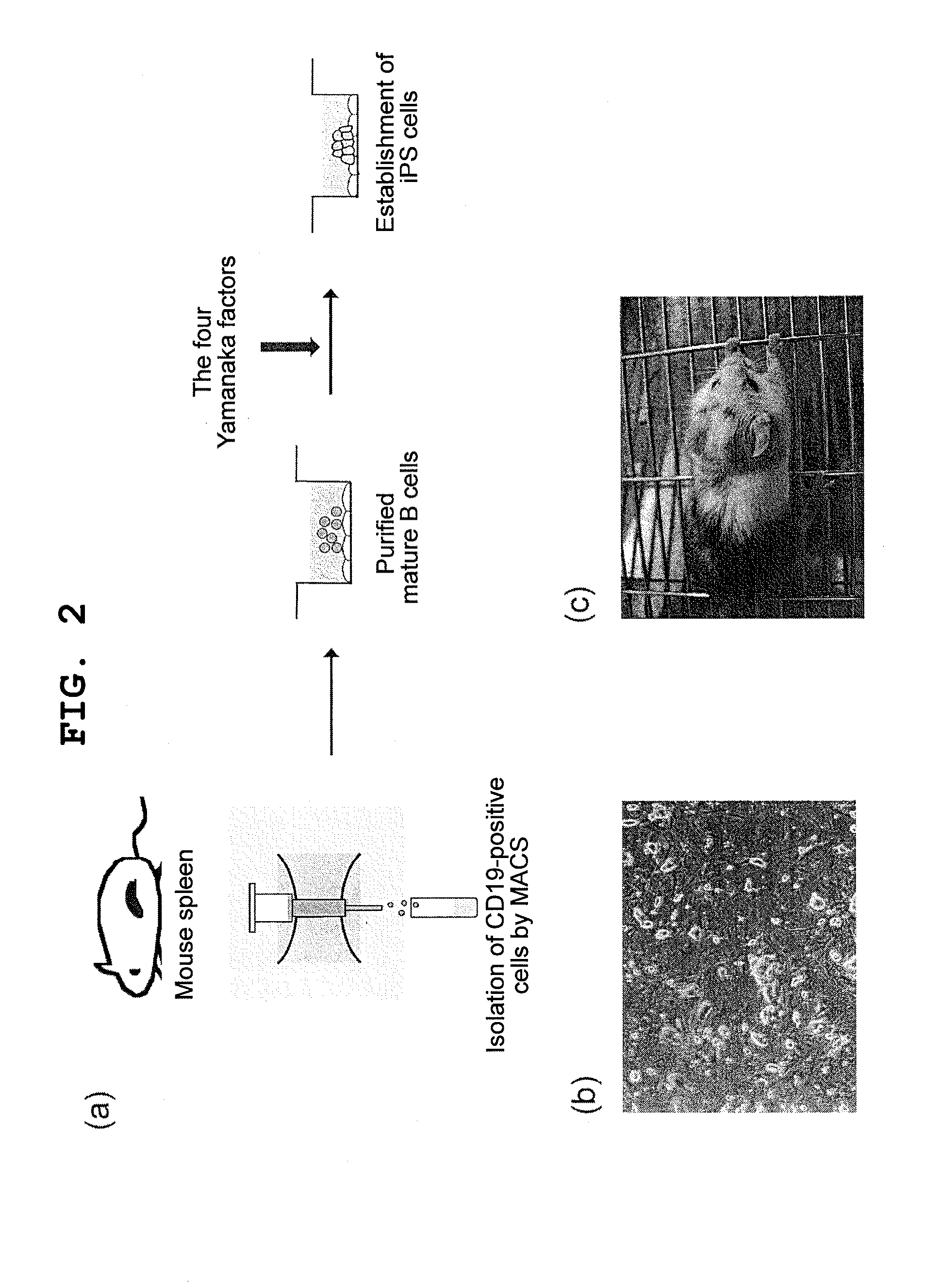B cell-derived ips cells and application thereof
a technology of ips cells and cells, applied in the field of b cell-derived induced pluripotent stems, can solve the problems of not being practicable, not yet being used, and finally differentiated cells are less easy to reprogram, and achieve the effect of low cos
- Summary
- Abstract
- Description
- Claims
- Application Information
AI Technical Summary
Benefits of technology
Problems solved by technology
Method used
Image
Examples
example 1
Establishment of iPS Cells from Mouse Splenocyte-Derived B Cells
[0084]By a conventional method, B cells were prepared from splenocytes of a C57BL / 6 mouse (purity 70%). The B cells were cultured in the presence of IL-2 (10 ng / ml) at a cell density of 106 cells / ml, using an RPMI medium containing 10% FCS for 24 hours, after which the cells were infected with a retrovirus containing four mouse-derived factors (nucleic acids that encode Oct3 / 4, Sox2, Klf4, and c-Myc) (106 pfu / ml) according to the method described in Cell, 126: 663-676 (2006) for 24 hours. After the viral infection, the cells were recovered, re-seeded onto mouse embryonic fibroblasts (MEF), and co-cultured in the presence of LIF using an ES cell culture medium. The emerging colonies were morphologically evaluated, and colonies assuming an ES-like morphology were picked up and further cultured in the presence of LIF on MEF, whereby 6 clones of B cell-derived iPS cells (B-iPS cells) were established (clone code names: 9a, ...
example 2
Characterization of B-iPS Cells
[0085]To demonstrate that the 6 clones of B-iPS cells established in Example 1 were derived from B cells, whether rearrangement to B cell receptor (BCR) had occurred was determined by genomic PCR. Since each B cell had BCR already rearranged therein, PCR was performed using the primers shown below, with the genome of each B-iPS clone as the template, to confirm the presence or absence of the rearrangement.
DHL:MTTTTTGTSAAGGGATCTACTACTGTG(SEQ ID NO: 1)JH3:CTCACAAGAGTCCGATAGACCCTGG(SEQ ID NO: 2)Vβ10:TCCAAGGCGCTTCTCACCTCAGTC(SEQ ID NO: 3)Vβ5:CCCAGCAGATTCTCAGTCCAACAG(SEQ ID NO: 4)Vβ8:GCATGGGCTGAGGCTGATCCATTA(SEQ ID NO: 5)VH7183:GAASAMCCTGTWCCTGCAAATGASC(SEQ ID NO: 6)VJ558:CARCACAGCCTWCATGCARCTCARC(SEQ ID NO: 7)VHQ52:ACTGARCATCASCAAGGACAAYTCC(SEQ ID NO: 8)Dβ1:TTATCTGGTGGTTTCTTCCAGC(SEQ ID NO: 9)Dβ2:GCACCTGTGGGGAAGAAACT(SEQ ID NO: 10)Jβ1.5:CAGAGTTCCATTTCAGAACCTAGC(SEQ ID NO: 11)Jβ2.6:TGAGAGCTGTCTCCTACTATCGATT(SEQ ID NO: 12)
[0086]As a result, it was confirmed ...
example 3
Establishment of iPS Cells from Purified Mouse B Cells
[0087]Splenocytes collected from a C57BL / 6 mouse were stained with FITC-conjugated anti-CD19, and CD19-positive B cells were purified by MACS (Miltenyi Biotec Company) using anti-FITC beads.
[0088]The mature B cells obtained were cultured in the presence of IL-4 (10 ng / ml) and LPS (25 μg / ml) at a cell density of 106 cells / ml, using an RPMI medium containing 10% FCS for 24 hours, after which the cells were infected with a retrovirus containing four mouse-derived factors (nucleic acids that encode Oct3 / 4, Sox2, Klf4, and c-Myc) (106 pfu / ml) according to the method described in Cell, 126: 663-676 (2006) for 24 hours. After the viral infection, the cells were recovered, re-seeded onto mouse embryonic fibroblasts (MEF), and co-cultured in the presence of LIF using an ES cell culture medium. The emerging colonies were morphologically evaluated, and colonies assuming an ES-like morphology were picked up and further cultured in the presen...
PUM
 Login to View More
Login to View More Abstract
Description
Claims
Application Information
 Login to View More
Login to View More - R&D
- Intellectual Property
- Life Sciences
- Materials
- Tech Scout
- Unparalleled Data Quality
- Higher Quality Content
- 60% Fewer Hallucinations
Browse by: Latest US Patents, China's latest patents, Technical Efficacy Thesaurus, Application Domain, Technology Topic, Popular Technical Reports.
© 2025 PatSnap. All rights reserved.Legal|Privacy policy|Modern Slavery Act Transparency Statement|Sitemap|About US| Contact US: help@patsnap.com



